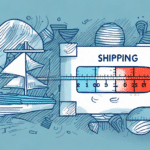How Much Does FedEx Charge Per Pound? A Comprehensive Guide
Are you wondering how much it costs to ship with FedEx? Understanding the pricing structure of this global shipping carrier can help you plan and budget your shipping needs more effectively. In this article, we provide a comprehensive guide on how FedEx charges for shipping and help you navigate through the factors that affect the cost of your shipment.
Understanding FedEx's Pricing Structure
Weight-Based vs. Dimensional-Based Pricing
FedEx calculates the cost of shipping based on two primary metrics: weight and dimensional weight. Most domestic and international shipping rates are determined by whichever is higher.
- Weight-Based Pricing: This straightforward method calculates the cost based on the actual weight of your package in pounds or kilograms.
- Dimensional Weight Pricing: If your package is large but lightweight, dimensional weight pricing applies, calculating the cost based on the package's volume. The formula is (length x width x height) / dimensional weight factor.
For example, FedEx's dimensional weight factor is 139 for domestic packages and 166 for international packages. This means a package measuring 12 x 12 x 12 inches would have a dimensional weight of approximately 11 pounds for domestic shipping. If the actual weight is less than 11 pounds, the cost is based on dimensional weight.
Importance of Accurate Measurements
Accurately measuring and weighing your package ensures you are charged correctly. Overestimating can lead to higher costs, while underestimating might result in additional fees. Utilize FedEx's online shipping calculator to get precise estimates.
Factors Influencing FedEx Shipping Costs
Distance and Delivery Speed
The distance between the origin and destination significantly affects shipping costs. Additionally, the chosen delivery speed—such as overnight, two-day, or ground shipping—can alter the price. Faster delivery services typically come at a premium.
Package Size and Weight
Larger and heavier packages require more resources to transport and handle, leading to increased costs. FedEx imposes additional fees for oversized or overweight packages.
Fuel Surcharges and Regulatory Fees
Fluctuations in fuel prices can lead to fuel surcharges. Moreover, international shipments may incur customs duties, taxes, and regulatory fees imposed by the destination country.
Service Type
FedEx offers various service types, including FedEx Express, FedEx Ground, and FedEx International. Each service type has different pricing structures based on speed and reliability.
Comparing FedEx Shipping Rates to Other Carriers
When evaluating shipping options, it's essential to compare FedEx's rates with other major carriers like UPS and USPS.
FedEx vs. USPS vs. UPS
- USPS: Generally offers lower rates for lighter packages but has limitations on package size and tracking capabilities compared to FedEx.
- UPS: Typically more expensive than FedEx for similar services but known for reliability and extensive tracking features.
- FedEx: Balances cost and service, often providing faster delivery times than USPS and competitive pricing with UPS.
According to the 2023 Statista report, FedEx offers a competitive edge in delivery speed and reliability, making it a preferred choice for businesses requiring timely deliveries.
Calculating Shipping Costs with FedEx
Using the FedEx Online Shipping Calculator
FedEx's online shipping calculator is an invaluable tool for estimating shipping costs. By entering the package's origin, destination, weight, and dimensions, you can obtain cost estimates for various FedEx services.
- Access the calculator here.
- Input package details accurately to receive precise estimates.
- Compare different service options to find the best fit for your budget and delivery needs.
Considering Additional Costs
While the calculator provides a baseline estimate, actual costs may vary due to factors like fuel surcharges, special handling fees, and delivery area surcharges. Always review the final shipping invoice for accurate billing.
Strategies to Save on FedEx Shipping Costs
Optimize Package Size and Weight
Use appropriately sized packaging to avoid dimensional weight charges. Selecting lightweight materials can also help reduce overall shipping costs.
Consolidate Shipments
Consolidating multiple shipments into a single package can lower overall shipping costs by reducing the number of shipments and associated fees.
Leverage Discounts and Promotions
FedEx offers various discounts for frequent shippers and businesses. Signing up for a FedEx account and exploring available promotions can lead to significant savings.
Use Third-Party Shipping Services
Platforms like ShipStation, ShipWorks, and Stamps.com can help streamline your shipping processes and negotiate better rates through aggregated shipping volumes.
Negotiate with FedEx
If you ship large volumes regularly, contact a FedEx representative to negotiate better rates based on your shipping history and volume. Businesses with substantial shipping needs may qualify for customized pricing.
Understanding Additional Fees and Surcharges
Common Additional Fees
- Residential Delivery Fee: Applies when delivering to a residential address instead of a commercial one.
- Saturday Delivery Fee: Additional charge for weekend deliveries.
- Oversize Package Fee: For packages exceeding standard size and weight limits.
- Fuel Surcharge: Variable rate based on current fuel prices.
How to Avoid Unnecessary Fees
Double-check recipient addresses to avoid incorrect address fees. Choose appropriate delivery options based on urgency and destination type. Opt for ground shipping when possible to minimize surcharges.
International Shipping with FedEx
Service Options
- FedEx International Priority: Faster delivery with higher cost.
- FedEx International Economy: Cost-effective option with slightly longer delivery times.
- FedEx Freight International: Suitable for heavy or large shipments.
Customs, Duties, and Taxes
International shipments may be subject to customs duties, taxes, and fees imposed by the destination country. FedEx provides tools and resources to estimate these costs, but it's essential to verify specific regulations for each destination.
Documentation Requirements
Ensure all necessary documentation is complete and accurate to prevent delays. Required documents may include commercial invoices, packing lists, and customs forms.
Comparing Ground vs. Air Shipping with FedEx
FedEx Ground
Advantages: More affordable, ideal for non-urgent shipments, especially over short to medium distances.
Considerations: Slower delivery times, tracking may be less detailed compared to express services.
FedEx Express
Advantages: Faster delivery options, comprehensive tracking, suitable for time-sensitive shipments.
Considerations: Higher cost, may include additional fees for certain delivery options.
Choosing the Right Option
Evaluate your shipment's urgency, budget, and destination to determine whether FedEx Ground or FedEx Express best suits your needs. Businesses often balance cost savings with delivery speed to optimize their shipping strategies.
Conclusion
Understanding how much FedEx charges per pound is crucial for effective shipping planning. By comprehending FedEx's pricing structure, factoring in the various elements that influence costs, and employing strategies to minimize expenses, you can optimize your shipping processes and manage your budget efficiently.
Remember to utilize tools like the FedEx online shipping calculator and explore discount opportunities through third-party shipping services or direct negotiations with FedEx. Whether shipping domestically or internationally, being informed about additional fees and choosing the appropriate service type will ensure a cost-effective and reliable shipping experience.
For more detailed information and resources, visit FedEx's official website at www.fedex.com.




















